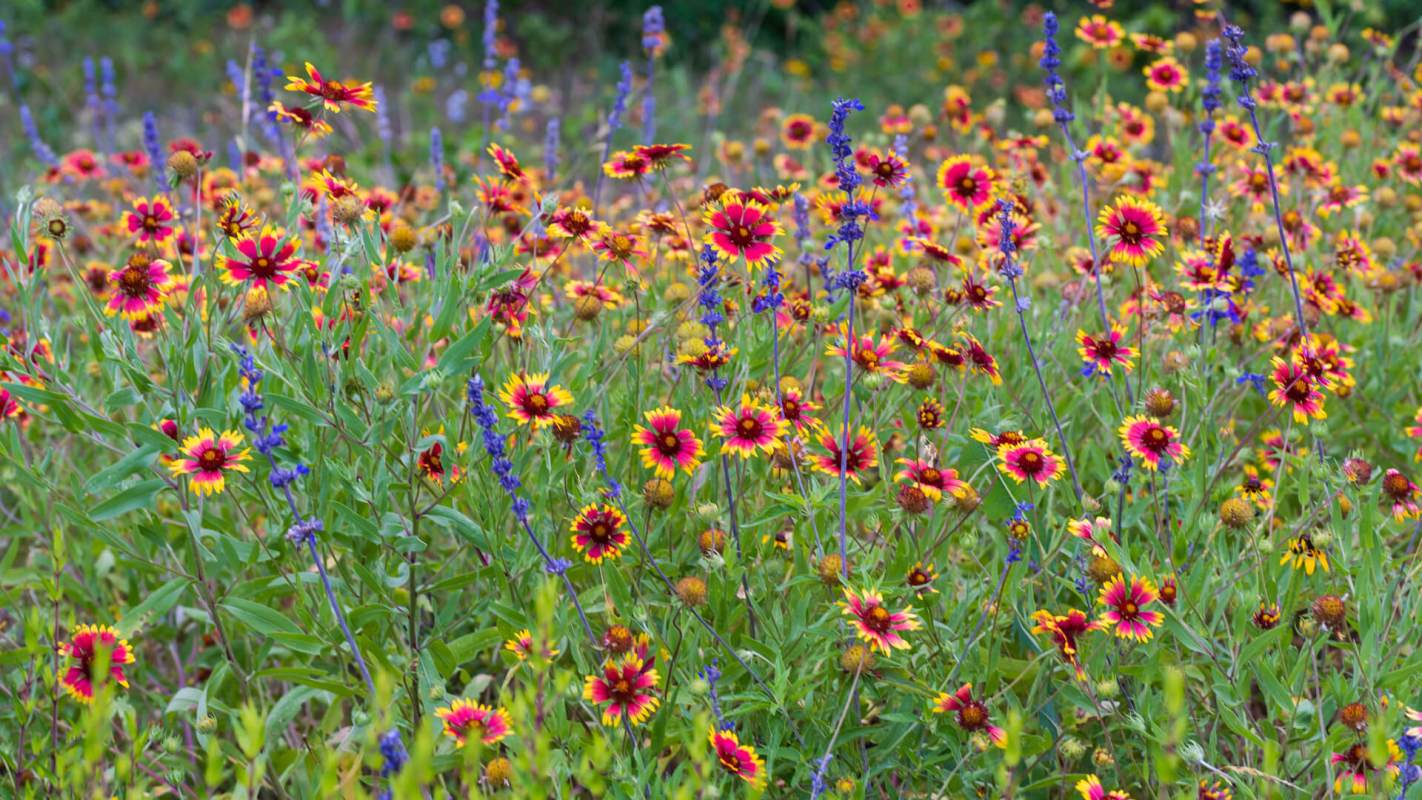What do turkey corn, swamp lousewort, American skunk cabbage, and sneezeweed (gesundheit) have in common? Besides having quirky names, they're all plants native to the U.S.
Let's explore what native plants are, and why they're so important.
Native plants naturally occur in a specific area without the help of humans, and have lived in one region for thousands of years. These plants have evolved with the region –– adapting to the region's moisture level, soil, weather, and native wildlife.
Native plants have also coevolved with wildlife, creating highly specialized relationships with other organisms. They develop mutualistic relationships with native animals, meaning both the plant and the wildlife benefit from their relationship.
This mutual benefit makes both these plants and wildlife dependent on each other. Because of this, a native plant is a critical element of its ecosystem.
Supporting local ecosystems
An ecosystem is a complex and interactive community of living plants, animals, and a non-living environment.
Native plants are specialized to attract insects, birds, and other animals so that, in return, these organisms will pollinate the plant and allow the plant species to reproduce.
Take the royal catchfly, for example. This plant is native to the Midwest and has a sticky flower to attract and trap pollinating insects to feed birds, and in return, the bird pollinates the plant –– both the plant and birds benefit.
Native plants form the foundation of any ecosystem and benefit bats, birds, insects, mammals, and other wildlife. So without them, small organisms that depend on the plants run out of food. And when the populations of small organisms dwindle, food sources for larger animals shrink, causing their populations to decline.
Without native plants, the ecosystem suffers. And when they thrive, the entire ecosystem thrives, too.
Benefits of native plants
Native plants have adapted and evolved to their region throughout time. These adaptations make them a highly specialized species that can endure their region's extreme conditions, such as harsh weather or common pests.
These adaptations allow you to use less fertilizer, water, and fewer pesticides, and the native plants in your yard will thrive –– cutting down on maintenance costs, water usage, and the use of harmful chemical additives.
Besides being a food source for local wildlife, native plants also shelter native animals.
Another benefit of native plants is their deep root systems, which allows them to strengthen the soil, preventing erosion and reducing floods.
Threats against native plants
Invasive plant species are the opposite of native plants –– they're foreign plants introduced by humans to a non-native region. Invasive species have evolved to spread and reproduce rapidly, making them a nuisance and a bully to native plants.
Invasive plant species use bullying tactics like hoarding nutrients in the soil, using up a lot of water, and crowding out other plants.
As pretty as they may be, invasive plants are real threats, as they disrupt the balance of an ecosystem that native plants have worked to create for thousands of years.
Land development is another threat to native plants, as diverse fields get replaced with concrete and uniform grass lawns.
How we can protect native plants
Whether you have acres of land or a balcony, you can help to protect native plants in several ways.
Rewilding your yard is one way you can help. This process involves planting more native species and returning some or all of your yard back to its natural state. You can use a native plant finder to discover plants native to your area.
For those with no yard access, native plants can even be potted on your balcony or in a window box.
Beyond your property, you can remove invasive plants from your surroundings by pulling them up.
Currently, there are very few protections for native plants under the Endangered Species Act, so another action you can take to protect native plants is advocating for legislation that would give them greater federal protection.
Little actions can have a big impact on helping these plants help the rest of their ecosystem thrive.
Join our free newsletter for cool news and cool tips that make it easy to help yourself while helping the planet.









